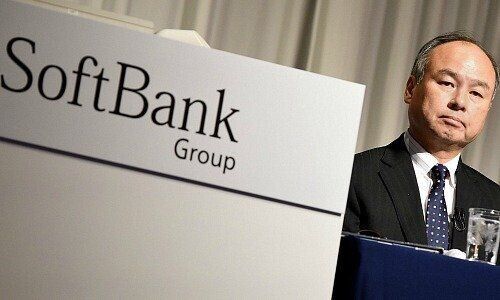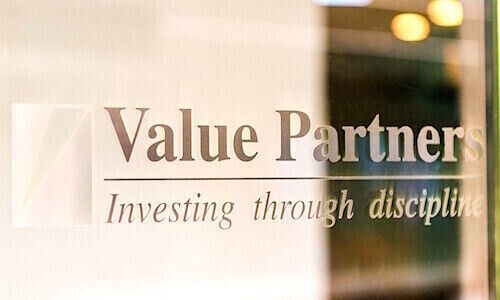The recent Finma decision on the Greensill debacle highlights the Swiss bank's severe organizational deficiencies and rampant conflicts of interest.
To say the least, the measures that the Swiss Financial Market Supervisory Authority (Finma) imposed on Credit Suisse Tuesday were uncharacteristic. No fine was imposed and there was no heavy-handed mandate for an external monitor.
Instead, the bank now has to review its 500 most important business relationships periodically for significant counterparty risks. It also has to record and document the areas of responsibility for each of its 600 highest senior executives.
Mythical Dimensions
It is likely that armies of compliance specialists will be kept busy by the mountains of records that pile up. Relationship managers and bank executives will have to think closely about the business relationships they want to enter and keep, particularly if they are held responsible in writing. Not once, but periodically.
That gives Finma's decision almost apocryphal proportions. It even sounds like the punishment of Prometheus in Ancient Greek mythology after he was bound to a rock and an eagle was sent by Zeus every day to eat his liver, only for it to regenerate overnight.
Partners and Clients
But the measures are fitting ones. They adequately capture many of the strange conflicts of interest that mark the Greensill debacle and set it apart from the other issues and crises that Switzerland's second-largest bank currently faces. The supply chain fiasco involved many different parts of the bank. Business partners were often clients, which made everything that much more complex. At first glance, there was a great deal of banking business that had little to do with fund management.
Glaring exceptions were made in the name of business, and that was something that would eventually prove fatal.
All of this is an outgrowth of the ideal of a «One Bank» which has always had its strong adherents in Swiss banking, even if they were in different periods and institutions. In practice, it means providing clients with various banking services from a single source as a way of increasing revenue. Back in 2015, ex-Credit Suisse head Tidjane Thiam became one of its strongest exponents. Under him, Switzerland's second-largest financial institution became the «entrepreneur's bank». It provided its wealth management capabilities to company owners as individuals and general banking, financial and lending services to the companies they owned.
Ideal Client?

(Image: Greensill Capital)
Taking a look at it from that perspective, Australian financier Lex Greensill (image above) must have looked ideal. As the key figure in this whole debacle, he made sure that the supply chain funds were fed a constant flow of invoices. His company was a client of the investment bank while he himself, according to the English-speaking media, was also a private banking client.
Finma puts it all in black and white in its enforcement announcement.
«Greensill, for its part, announced to the bank that it was planning an IPO with Credit Suisse. Greensill first needed a bridging loan. The Credit Suisse risk manager responsible for the loan identified a number of risks in Greensill’s business model. He, therefore, recommended internally at the bank not to grant the loan. A senior manager overruled this recommendation.», Finma wrote.
Overruled by CRO
Greensill's plan to list back then is well established. Greensill Capital was going to make an IPO in 2021. To get there, the company needed a bridge loan of $140 million, with a related capital increase around the same time supposedly being a prelude to the eventual IPO. The loan was approved by the then bank's risk and compliance head Lara Warner after a risk manager had recommended it be rejected.
In March 2021, the insurance contracts for the investments in Greensill funds were set to expire, something that Warner was supposedly not aware of at the time. Credit Suisse subsequently blocked over $10 billion in assets in the funds, triggering the whole debacle. One of the first things the bank had to do subsequently, however, was write off the bridge loan – something that points out a glaring conflict of interest.
Dumping Softbank
Credit Suisse's Greensill funds were already making headlines in 2020. There was a complicated network of relationships between the funds, Greensill Capital, and Japanese tech company Softbank, including the latter's colorful founder Masayoshi Son (image below). When it came to the conflicts of interest, they seemed to be acting in tandem despite the circular nature of many of the transactions. Softbank subsequently pulled out of the Credit Suisse Greensill vehicle it was involved in.

(Image: Keystone)
Debtors were left with Softbank's venture capital investments in the Greensill fund and with Greensill Capital itself. Son was also allegedly a private banking client, one that former Credit Suisse CEO Thomas Gottstein had even personally met.
Clients and Lawsuits
Son and Credit Suisse have become deep enemies in the meantime. At the end of 2022, the bank got the go-ahead to press charges against Softbank. It is part of a bid to recoup $440 million from Katerra, a now-defunct construction firm that was backed by the Japanese investor.
Specifically, Katerra drew $440 million from Greensill, a now-insolvent UK supply chain financier. The debt was sold to Credit Suisse's funds as low-risk investments.
Another case of a complicated web of relationships and very significant conflicts of interest.
Shareholder Knowledge
Credit Suisse faced tough questions from investors related to Softbank at its annual general meeting in 2022, particularly related to events that happened over a year before the funds were closed.
The bank responded to the surprisingly well-informed interrogators that the supply chain funds were already suffering from liquidity issues in March 2020. At the time, Softbank had been willing to contribute an additional $1.5 billion in funding to keep them above water. In return, they asked the bank to sign a so-called «side letter». In it, the bank had to commit to purchasing any new debt from Greensill Capital only.
At that point in time, Softbank held a large stake in Greensill. Its Vision Fund also held shares in companies that refinanced themselves through Credit Suisse's Greensill supply chain funds. At times, Softbank was directly invested in the fund.
Finma Alarmed
The heads of Credit Suisse Asset Management (CSAM) agreed to the deal even though it clearly would not be treating all debt investors equally. When bankers at the group level learned of this they promptly escalated the matter over the course of 2020. The side letter was canceled and an internal investigation started. Finma was alerted and those responsible for it at CSAM were reprimanded.
But the supply chain funds never recovered from all of this. Once again, a complicated tangle of supposedly special relationships and conflicts of interest.
The current Credit Suisse CEO Ulrich Koerner reacted to Finma's enforcement action by reaffirming the importance of the measures the bank has instituted to strengthen its risk and compliance culture. There was no talk of it becoming any less of an «entrepreneur's bank». In essence, that means there is still a clear risk that bankers will become prone to extenuating circumstances and conflicts of interest in the future.



























